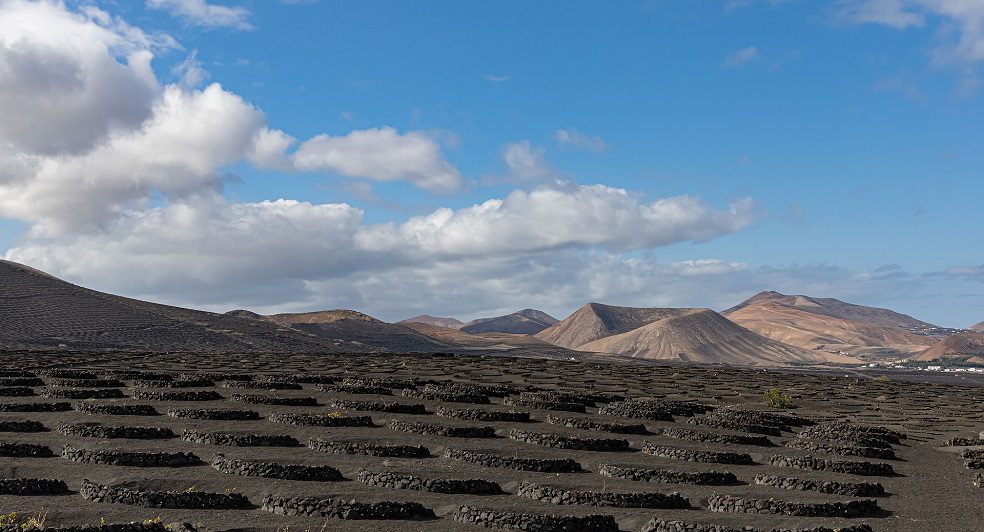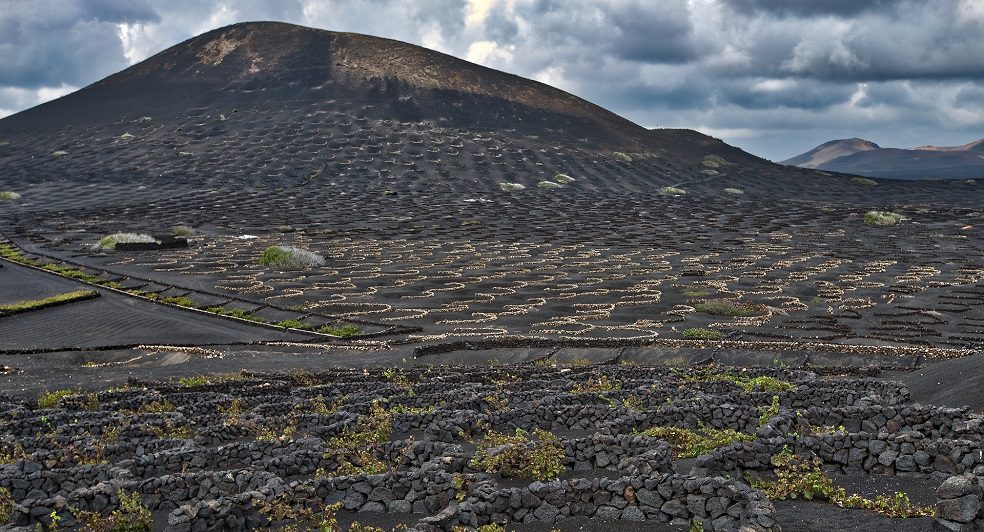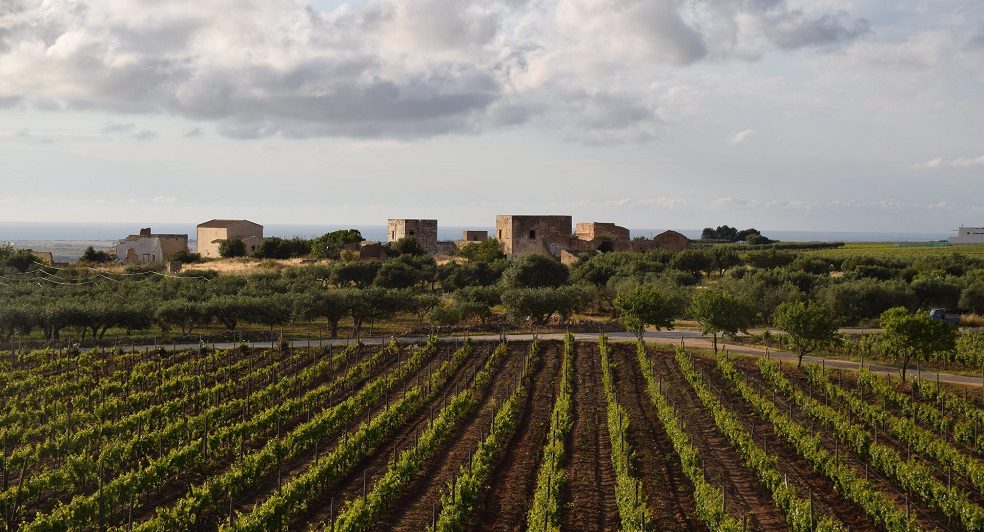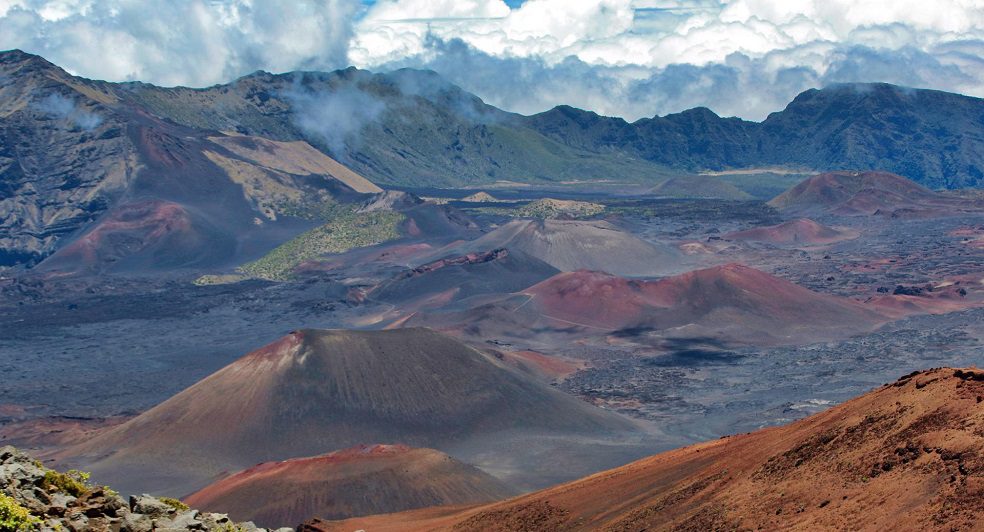Volcanic Vineyards
6th September 2022

One of the most fascinating and rewarding places to plant vines is in Volcanic ash.
Vines planted in mineral-rich soils produce an outstanding quality of grapes, which translates to remarkable Sparkling Wines, volcanic soil is considered very mineral-rich, with the grapes absorbing volcanic characteristics that produce some of the world’s most flavourful Sparkling Wines.
Volcanic soil can also be known as Andisols, which is formed from volcanic ash and cinder deposits.
One thing that you can experience in a Sparkling Wine that’s been produced on volcanic terroir, is that the aromas and flavours display some of the unique characteristics of the volcanic terroir, you may think that just means the Sparkling Wine will taste like bitter, smoky ash, but that is far from the truth, the grapes used in these Sparkling Wines absorb incredible notes from the soil that deliver a charming, sophisticated and enjoyable tasting experience.
If you’re looking to explore Volcanic Vineyards, then take a glance at these 3 different locations, that produce some amazing Sparkling Wines on a volcanic terroir.
Lanzarote

Lanzarote is home to over 200 volcanoes with some of them dating back millions of years, but many of them appeared less than 300 years ago, the coastline, caves and many of the island features have been created by their volcanoes. Despite having hundreds of volcanoes and being known as the ‘Island of Volcanoes’ there is only one active volcano, which is the Timanfaya volcano in the Timanfaya National Park which spans across ¼ of the island.
When planting vines on Lanzarote, there is only really one place to do it, on the eastern edges of the Timanfaya National Park where the blanket of ash from the last eruption landed, you’ll find most of the vineyards and wineries in this area.
Each vine is planted in its very own sheltered place, the depth and diameter of each hole depend on the thickness of the ask or picón layer, the holes can reach down to 4 metres deep and 6 metres wide, these funnel-shaped pits help the roots of the vines find the soil underneath the ash above, the circular or semi-circular stone walls around each vine is called ‘zocos’, these walls create a rippled wave effect on the landscape which help the vines grow in the hot climate. Per hectare, they typically harvest between 500 and 1,500 kg of grapes.
The main grape variety on Lanzarote is the ‘Volcanic Malvasia’ it originates from Greece, it was brought to the Canary Islands during the 16th century from Madeira in Portugal.
Lanzarote, at the time of writing, has 21 wineries on the Island, combined they only produce around one million bottles a year, with most of them being consumed on the island. The management of the vines is a big part of Lanzarote, with 2,000 people working as viticulturists and 2-300 employed directly in viticulture, this is out of a population of over 150,000.
There is a lot more to learn about Lanzarote and its wineries here: Discover the Lanzarote Wine Region on Glass of Bubbly.
Sicily

One of the most active volcanoes in the world sits on the island of Sicily, on the east coast and upon the side of the volcano, vines are planted, grapes grown and wine made, on what is commonly known as Mount Etna.
Sicily sometimes gets lost in the shadow of Italy, despite being just as charming, with many of the same qualities and an incredible production of wine and food.
A winery sits on the side of Mount Etna, with 3,000 foot high views, you can imagine the draw-dropping experience their tasting room delivers.
Hawaii

The tropical paradise of an island doesn’t just have culture, history and untouched natural beauties, it has vineyards planted in volcanic ash.
When it comes to Sparkling Wine in Hawaii, you can find at least one Sparkling Wine made in a completely different way from what we normally find in the rest of the world, the reason it’s different? There is a winery in Hawaii that produces fruit wine, which means you can enjoy a glass of Pineapple Sparkling Wine while on the island, a Sparkling Wine made from 100% Maui Gold Pineapples.
Most of the wine production happens on the island of Maui, with a smaller amount being produced on the island of Hawaii.
One of the principal grapes grown in Hawaii is the Symphony grape, although it can be referred to as the Olmo Grape, the reason for this is because of who created it, it was first produced by viticulturist Dr. Harold Olmo at the University of California. This grape is very good at making Extra-Dry/Off-Dry fruity white wines.
As Hawaii is a U.S. state, Hawaiin Wine is referred to as ‘Wine made in the U.S. state of Hawaii‘.
Two more of the most active volcanoes in the world are located on The Big Island of Hawaii, in Volcanoes National Park, they are called the Kīlauea and Mauna Loa.
If you think the previous winery was high up above sea level at 3,000 feet, a winery that opened in 2018 has its tasting room, vineyard and tea garden sitting at 4,000 feet up the volcano, adjacent to Hawaii Volcanoes National Park.
If you want to look deeper, you’ll find many more vineyards planted close to or on the sides of volcanos, in countries like Spain, Portugal, Hungary, Greece, France and Italy.
Thank you for reading, and until next time, enjoy the fizz!
Informational Credit: Hawaiian Wine
Image Credit: Lanzarote – Sicily – Hawaii – Volcanic Vineyard
![]()
Oliver Walkey
Champagne and Sparkling Wine Writer, Focused on Bringing the Exciting and Fascinating World of Bubbly to You.
